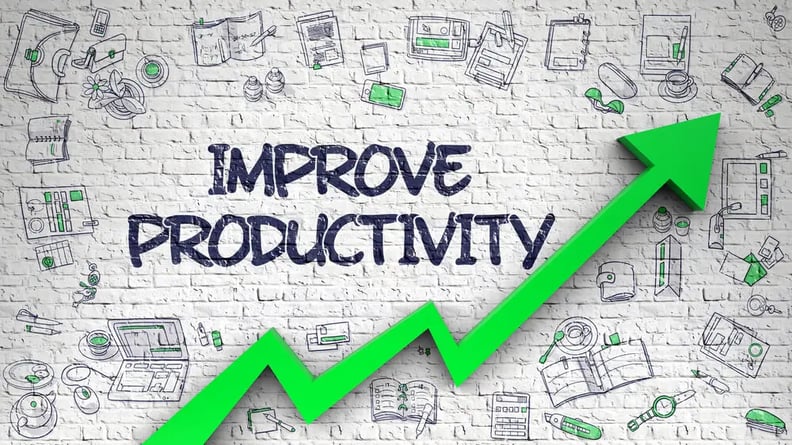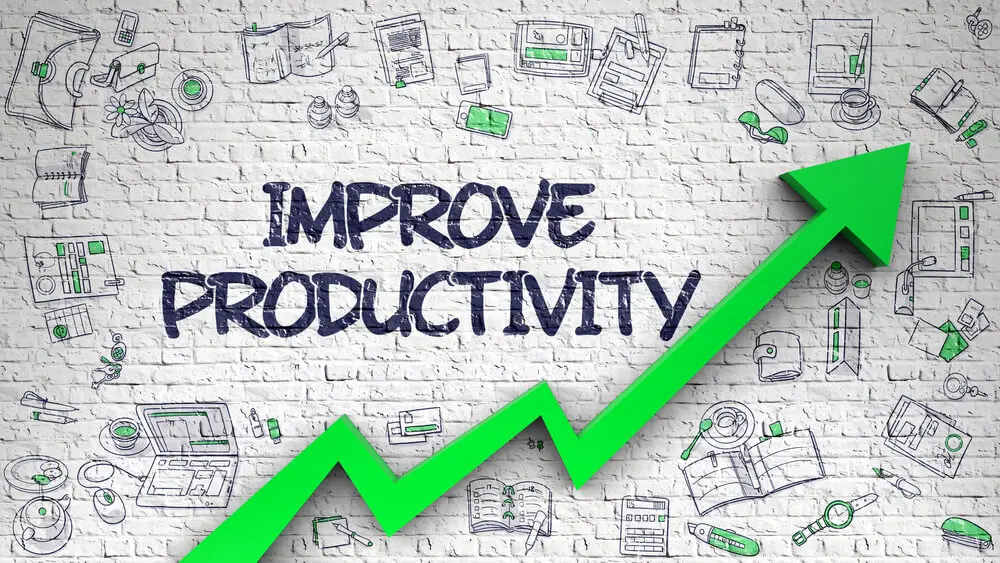This article explores why productivity and employee engagement matters. We’ll cover:
- What is productivity?
- Why we need to improve
- How to measure employee productivity
- Tips to improve your business’ productivity
What is productivity?
Productivity is the measure of production against efficiency. It crops up a lot in everyday conversation. You're most likely to hear it thrown around in meetings, seminars and surveys. Now, it's coined as the anecdote to our economic troubles. And we all want to become more productive.
But how can we measure it and why do we need to?
Some believe that the success of a business hinges on employing and retaining the best mindsets. Whatever your belief, it's encouraging to see SMEs searching for smarter ways to inspire employees and switch from working patterns and arrangements that date back to 19th century socialism. Such hours and requirements can hinder our productivity and business growth.
That's why many businesses are tackling productivity concerns by looking into flexible working options. From flexi-time and remote working to workplace wellbeing plans, personal development objectives and self-managed teams; you have options.
So let's learn how to work smart.

Why does it matter?
According to Opus Energy, 86% of UK SMEs believe productivity is an issue. Given that there are more than 5.7 million SMEs in the UK, making up 99% of the UK’s businesses, productivity inefficiencies have a substantial impact on the UK economy.
Our recent research found that 75% of SME decision makers are happy with their business productivity and one in five (22%) businesses are not measuring productivity at all.
A further survey carried out by merchant bankers, Close Brothers, of over 1,400 SMEs across the UK, France and Germany, found that of those SMEs who don’t measure productivity, 28 per cent don’t know how.
There are obvious issues around unquantifiable tasks. One hour spent on the phone resolving a query from an unhappy customer could be worth a lot more than one new sales’ call. Why? An unhappy customer can do more damage to your business than you think.
But how do SMEs measure productivity?
Accurate productivity measurement is fairly complex but can be helped using productivity calculators. In most cases, it is not a simple case of counting up how many widgets are produced by each employee in a day. Many tasks are difficult to measure and quality of work also has needs factoring in.
A factory worker may turn out 100+ products each day, but if the products aren’t made to a sufficient standard, both time and materials are being wasted. It goes without saying that quality is the hardest aspect of employee productivity to measure.
Tips for measuring employee productivity
So how do you chart employee productivity to gain a better understanding of how your business is performing?
1. Establish a baseline
First and foremost you need to establish some baseline metrics to measure against. You will need to identify expected work outputs for each position. While it may be easy to apply productivity metrics to roles with specific tasks, it may be less clear how you apply the same metrics to more general roles, such as receptionists and administration staff.
However, expectations should be set for every role. This provides clarity for both employer and employee. It creates a reference point for the baseline measurement of performance and holds the employee accountable.
2. Define and measure tasks (not hours)
Define measurements that relate to key functions of the job or use broader measures. Useful measurement include how quickly customers are served, how many invoices are sent out, how many sales calls are made, how many orders are dispatched and so on. In some cases it may be easier to measure group output.
3. Set clear objectives and goals
Consider how your employees’ performance is contributing to your business’s goals and targets. Set clear objectives and use regular performance reviews to evaluate progress.
4. Carry out a client survey
Poor employee performance ultimately has an impact on your customers. A client survey can be a good way of getting feedback and tracking back to individual employees when a particular order or service hasn’t gone to plan. Outstanding performance can also be identified and praised.
5. Place a value on quality of work
The timely completion of tasks to a high standard is a key indicator in measuring employee performance. By monitoring quality of work, as well as quantity, training needs can be quickly addressed.
6. Monitor the toxic triplets
Monitoring absenteeism is an essential component of measuring employee performance. If an employee performs brilliantly when at work, but takes an excessive amount of time off sick due to work stress, productivity overall will be affected.
Presenteeism (employees who attend work when they are ill) impacts significantly on performance. Putting a value on presenteeism is extremely difficult, but it is worth addressing. In the long term, employees who attend work whilst they are ill have a negative impact on overall productivity. Attending work while sick also increases the chances of infecting other staff and extends recovery time.
Measurement difficulties relate to identifying episodes and relating those to productivity. Employee surveys can be helpful. For example, ask employees ‘When over the past 12 months did you work when you were sick?’ Workplace well-being programmes can help to identify and address presenteeism.
7. Consider culture
Company culture is the sum of what you and your staff do and say, how you act within a business, how customers, products and services are treated. It is the everyday organisational structure and it defines you and your business.
Firstly, check out our other company culture blogs and identify yours. You'll fall into one of four types - hierarchical, clan, market or adhoc culture.
Then set about creating relevant goals for your company and industry. These will reflect your dreams for the business, your vision and purpose. Poor or toxic company cultures are proven to lower productivity, generate a higher staff turnover as well as larger recruitment and retention costs.
The importance of understanding employee engagement
Productivity is obviously one of the pathways to success. Employees are central to driving your business forward, so equal attention should go into understanding employee engagement and managing change. Measuring employee productivity is crucial if SMEs want to identify problem areas and support staff to be the best they can be.

Author: Aimée Brougham-Chandler
An IDM-certified Digital Copywriter as of February 2023, Aimée is Breathe's Content Assistant. With a passion for guiding readers to solutions for their HR woes, she enjoys delving into & demystifying all things HR: From employee performance to health and wellbeing, leave to company culture & much more.





